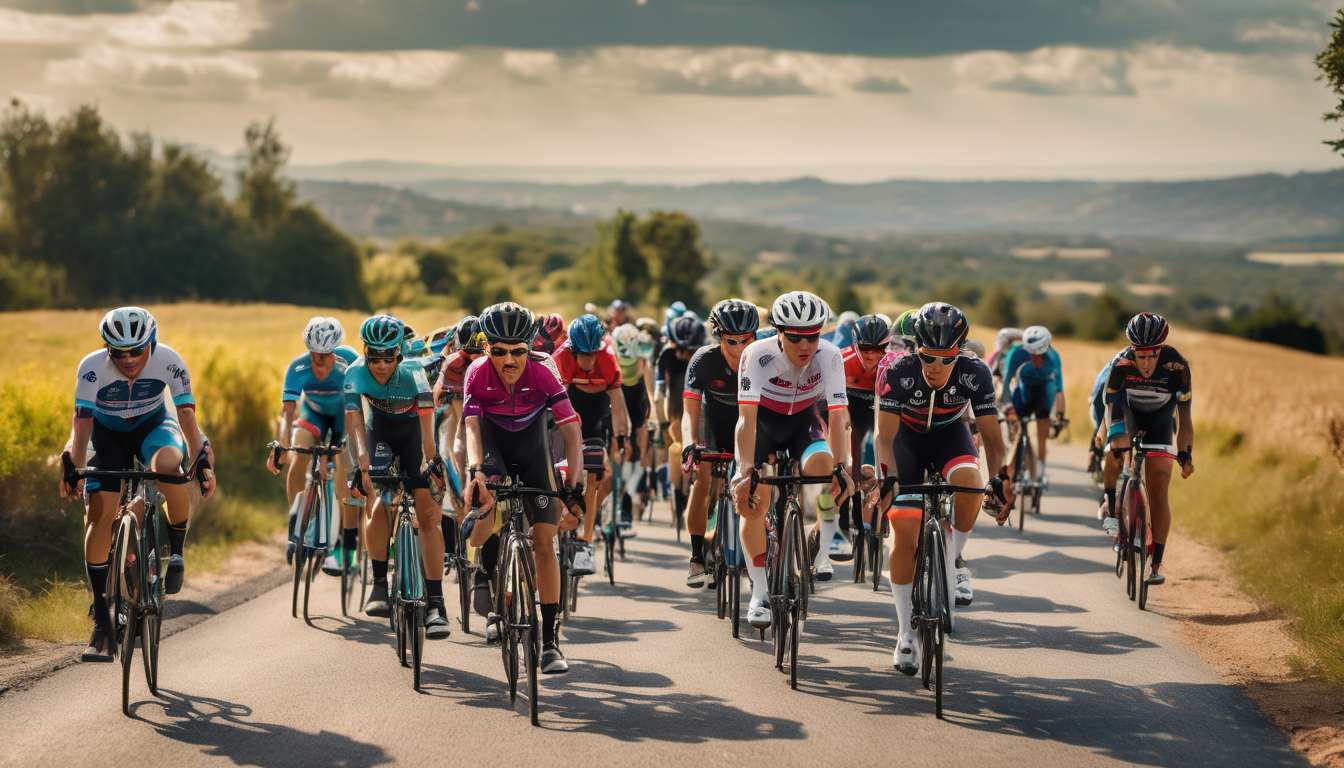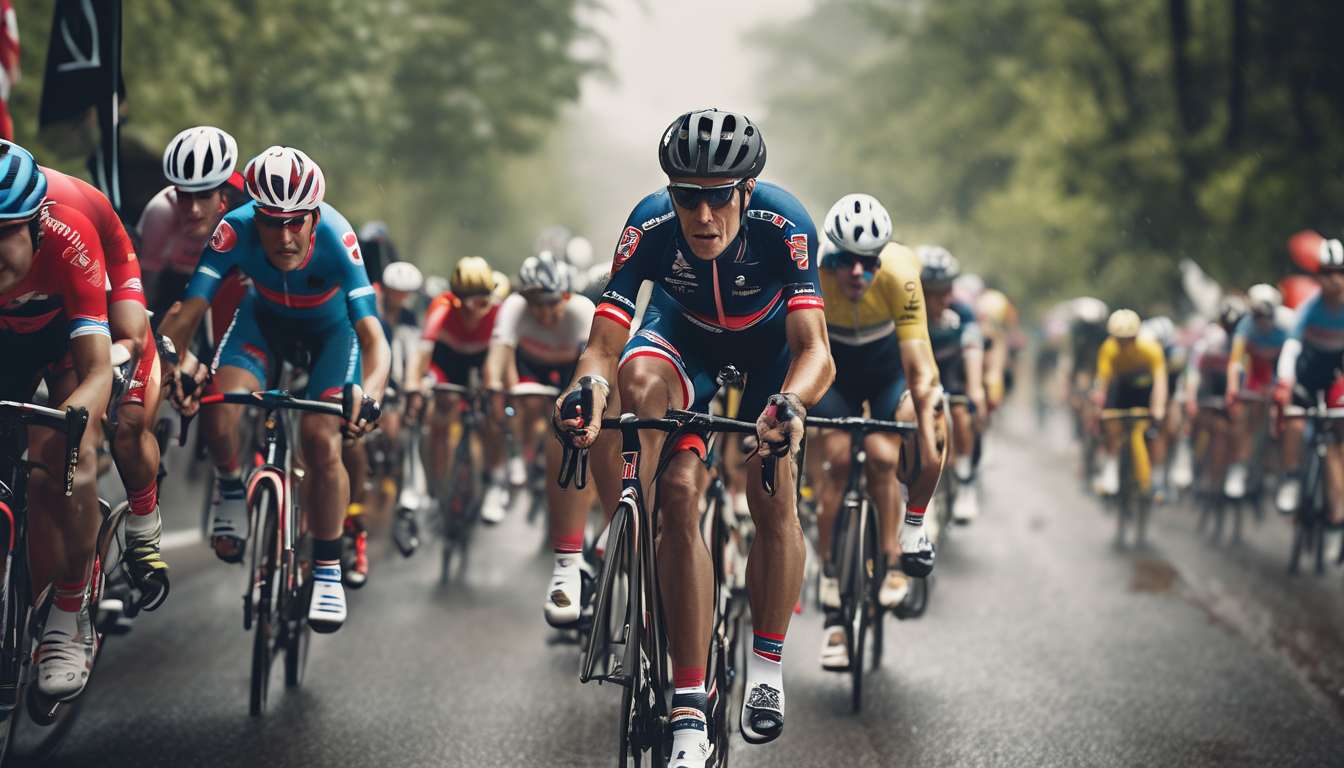As dedicated cyclists, we understand the thrill of the open road and the relentless pursuit to improve our performance. Whether we are seasoned athletes or enthusiastic newcomers, analyzing our cycling performance has become an integral part of our journey.
In this article, we delve into the best cycling performance metrics that can transform our rides and elevate our efficiency. By leveraging data from tools like power meters, heart rate monitors, and GPS devices, we gain insights into our strengths and areas for improvement.
We will explore key metrics such as:
- Power-to-weight ratio
- Cadence
- Heart rate variability
These metrics offer a comprehensive view of our fitness levels and ride efficiency.
By understanding these metrics, we can tailor our training plans to push our limits and achieve personal bests.
Together, let’s gear up to unlock the full potential of our cycling endeavors and pedal our way to success.
Power-to-Weight Ratio
A key metric in cycling performance is the power-to-weight ratio, which measures the watts produced per kilogram of body weight. This ratio is crucial for the cycling community to understand as it directly impacts our rides. Improving this ratio means we can climb hills faster and maintain speed with less effort.
To boost our power-to-weight ratio, we focus on two main areas:
-
Increasing Power Output: Enhancing the amount of power we can generate while cycling.
-
Managing Body Weight: Ensuring that our weight is optimal for efficiency without compromising health.
We must also consider the importance of cadence and heart rate variability in this journey.
-
Maintaining an efficient cadence helps us optimize power output.
-
Monitoring heart rate variability aids in understanding our recovery needs.
By harmonizing these elements, we can collectively enhance our performance.
By sharing insights and experiences, we encourage each other to achieve our personal bests. Let’s pedal forward, united in our pursuit of cycling excellence.
Cadence Analysis
Our cycling performance is significantly influenced by how effectively we manage our pedal cadence. As fellow cyclists seeking to optimize our rides, we know that cadence isn’t just about speed; it’s a dance of rhythm and efficiency.
Benefits of Maintaining an Ideal Cadence:
- Reduce muscle fatigue
- Improve Power-to-Weight Ratio
- Climb hills with greater ease and endurance
We’ve all experienced those moments when our legs feel like they’re in perfect harmony with the bike. That’s cadence magic, and it plays a crucial role in how we perform.
By analyzing our cadence, we can:
- Identify our sweet spot where power aligns with comfort
- Conserve energy
- Maintain a stable Heart Rate Variability, ensuring we’re not overexerting ourselves
Together, we can explore and fine-tune our cadence, creating a shared experience that enhances our rides and strengthens our cycling community. Let’s pedal smartly, not just harder.
Heart Rate Variability
Understanding Heart Rate Variability (HRV)
Understanding our body’s heart rate variability (HRV) provides valuable insights into our recovery and adaptation to the demands of cycling. By monitoring HRV, we can:
- Gauge our readiness for intense rides
- Assess the impact of stress, rest, and nutrition on our recovery
Benefits for the Cycling Community
As a community that thrives on mutual support and shared success, we can use HRV to fine-tune our training plans, ensuring we’re not overextending ourselves. By incorporating HRV into our training, we can balance our efforts to:
- Meet our cycling goals
- Maintain health and well-being
HRV in Relation to Other Metrics
While our power-to-weight ratio and cadence are crucial for improving cycling performance, HRV adds another layer of understanding:
- High HRV: Indicates that our bodies are adapting well and we’re ready to push our limits.
- Low HRV: Signals the need for rest and recovery.
By considering HRV alongside other metrics, we can ensure a more comprehensive approach to training within our supportive cycling community.
Speed and Pace Tracking
Tracking Speed and Pace
Tracking our speed and pace is essential for gauging our cycling performance and setting achievable goals. We thrive on knowing how fast we’re going, and understanding our pace helps us push boundaries together.
Power-to-Weight Ratio
By focusing on our Power-to-Weight Ratio, we can better comprehend how efficiently we’re cycling. This ratio is crucial when:
- Climbing hills
- Maintaining speed on flat terrain
Monitoring Cadence
As we ride, monitoring our cadence becomes equally important. Cadence, or the rate at which we pedal, can drastically affect our overall speed and endurance.
Heart Rate Variability
By keeping an eye on our Heart Rate Variability, we can fine-tune our efforts, ensuring we’re not overextending ourselves. This data helps us:
- Sync our physical exertion with our body’s needs
- Create a harmonious balance
Comprehensive Cycling Metrics
Together, these metrics provide a comprehensive picture of our cycling capabilities, allowing us to share insights and improve collectively.
Let’s continue to pedal forward, united in our quest for better performance.
Energy Expenditure Calculation
Calculating Energy Expenditure
Calculating our energy expenditure helps us understand how many calories we burn during a ride, enabling us to optimize our nutrition and recovery strategies. As a cycling community, we know the importance of balancing our energy input with output.
Power-to-Weight Ratio
Our Power-to-Weight Ratio plays a crucial role in determining how efficiently we convert energy into speed. By monitoring this metric, we can tailor workouts to improve our performance.
Cadence
Cadence, or the rate at which we pedal, also impacts our energy expenditure.
- A higher cadence can help us maintain speed with less fatigue.
- A lower cadence might increase energy use.
By finding the sweet spot in cadence, we can ride longer and stronger as a team.
Heart Rate Variability (HRV)
Heart Rate Variability (HRV) is another key component. It helps us gauge our body’s response to training and recovery. By analyzing HRV, we can adjust our efforts to avoid overtraining and ensure we’re ready for our next group ride.
Conclusion
Together, these metrics guide us in achieving our cycling goals.
Aerobic and Anaerobic Thresholds
Understanding Aerobic and Anaerobic Thresholds
Understanding our aerobic and anaerobic thresholds is essential for optimizing training intensity and improving performance. These thresholds guide us in balancing endurance and power. By identifying these limits, we can tailor our workouts to maximize efficiency and results.
Power-to-Weight Ratio
- Our Power-to-Weight Ratio becomes a crucial metric as it helps gauge how effective our power output is relative to our body weight, especially when pushing past these thresholds.
Monitoring Cadence
- Monitoring cadence is another vital aspect.
- By keeping a steady cadence, we ensure we’re not over-exerting ourselves too soon, maintaining a sustainable pace that aligns with our aerobic capacity.
- As we approach our anaerobic threshold, adjusting cadence helps us manage fatigue and maintain a strong performance.
Heart Rate Variability (HRV)
Heart Rate Variability (HRV) offers insights into how our body responds to training stress. By understanding HRV fluctuations, we can better align our training sessions with our aerobic and anaerobic capabilities, ensuring we’re neither overreaching nor underperforming.
Community and Shared Goals
Together, these metrics foster a sense of community through shared goals and achievements.
Training Load Monitoring
Effectively monitoring our training load helps us balance intensity and recovery, ensuring optimal performance and reducing the risk of overtraining. By keeping an eye on key metrics, we can tailor our training to meet our specific needs.
Key Metrics to Monitor:
-
Power-to-Weight Ratio
- Crucial for evaluating how efficiently we convert strength into speed, especially during climbs.
- Maintaining an optimal ratio is a shared goal that connects us in the pursuit of improvement.
-
Cadence
- The rhythm of our pedal strokes influences endurance and overall efficiency.
- A steady cadence helps us ride longer with less fatigue, fostering unity in our collective pursuit of cycling success.
-
Heart Rate Variability
- Serves as a vital indicator of our body’s readiness to train.
By tracking these metrics, we’re not just training; we’re joining a community striving for excellence, learning from one another, and celebrating each other’s achievements on our cycling journey.
Recovery and Rest Period Analysis
Analyzing Recovery and Rest Periods
Understanding recovery and rest periods is crucial for maximizing performance and preventing burnout. When cyclists gather as a community, comprehending these metrics helps support each other in achieving their goals.
Heart Rate Variability (HRV)
Monitoring Heart Rate Variability (HRV) provides insights into recovery status and readiness for the next ride.
- A balanced HRV indicates good recuperation.
- A lower HRV might suggest the need for more rest.
Importance of Rest for Power-to-Weight Ratio
As we focus on improving our Power-to-Weight Ratio, recognizing the importance of rest is essential for muscle repair and growth. During rest periods:
- Cadence efficiency improves.
- Ability to maintain consistent performance over long distances is reinforced.
Community Support and Accountability
By sharing experiences and data, we create a supportive environment where accountability for taking necessary breaks is encouraged. Together, we can cultivate a culture that values rest as much as the ride itself.
What are the psychological factors that can affect cycling performance metrics?
Cycling Performance Metrics: Psychological Factors
When evaluating cycling performance, it is essential to consider the psychological factors that can significantly influence results. These include:
- Motivation: The drive that pushes us to train harder and consistently.
- Focus: The ability to concentrate on tasks and maintain attention during rides.
- Mental Toughness: The resilience to overcome challenges and persist through difficult conditions.
Impact of Mindset
Our mindset can affect various aspects of cycling, such as:
- Training: A positive mindset can enhance the effectiveness of training sessions.
- Recovery: Mental resilience aids quicker recovery from physical exertion.
- Overall Performance: A strong psychological foundation contributes to better performance on the road or trail.
Optimizing Cycling Performance
By understanding and addressing these psychological aspects, cyclists can optimize their performance and strive to reach their full potential.
How can environmental conditions, such as weather or altitude, influence cycling performance?
Weather and Altitude in Cycling Performance
Weather and altitude are crucial factors that significantly impact cycling performance.
Environmental Conditions:
- Wind: Can either aid or hinder speed depending on its direction.
- Rain: May affect traction and visibility, requiring more caution.
- Heat: Can lead to dehydration and fatigue, affecting endurance.
High Altitude:
- Affects oxygen intake, making it challenging to maintain usual pace.
- Requires acclimatization to adapt to lower oxygen levels.
Strategies for Optimization:
- Awareness: Be mindful of weather forecasts and altitude challenges.
- Adjustment: Modify pace and effort based on environmental conditions.
- Preparation: Ensure proper hydration and gear for specific weather.
By considering these factors and adjusting strategies accordingly, cyclists can optimize performance and enhance the overall enjoyment of their rides.
What role does nutrition play in optimizing cycling performance metrics?
Nutrition is key to optimizing our cycling performance metrics.
We make sure to fuel our bodies with the right balance of nutrients to sustain energy levels and aid in recovery. This involves:
- Carbohydrates
- Proteins
- Fats
Hydration is also vital for maintaining performance. By focusing on our nutrition intake, we can enhance:
- Endurance
- Power output
- Overall cycling efficiency
It’s a crucial aspect of our training regimen that we prioritize for peak performance.
Conclusion
In conclusion, incorporating cycling performance metrics into your training regimen can help you track progress, optimize workouts, and improve overall performance.
By monitoring key indicators, you can fine-tune your training to reach peak performance levels. These indicators include:
- Power-to-weight ratio
- Cadence
- Heart rate variability
Utilizing these metrics effectively can lead to a better understanding of your body’s responses to training, allowing for smarter and more efficient cycling sessions.
Start tracking these metrics today to elevate your cycling performance!




